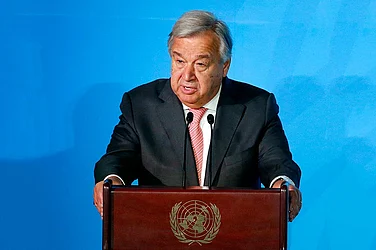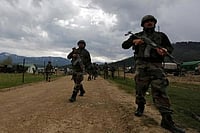As people are scrambling to evacuate northern Gaza ahead of a feared Israel ground offensive, the non-governmental organisation Human Rights Watch (HRW) has accused Israel of using white phosphorous bombs in Gaza Strip and Lebanon in the ongoing war. The use of white phosphorus in Gaza, one of the most densely populated areas in the world, exacerbates the risk to civilians and violates the international humanitarian law prohibition on putting civilians at unnecessary risk, the organisation warned.
The HRW said that the two instances of purported white phosphorous bombing took place on October 10 and 11. In addition to HRW’s latest claim of its use, a 2009 HRW report found that Israel extensively used white phosphorus munitions during its Operation Cast Lead in Gaza, which lasted from December 27, 2008, until January 18, 2009.
What is white phosphorous?
White phosphorus is a chemical substance, dispersed in artillery shells, bombs, and rockets, and ignites when exposed to oxygen. It is very toxic to humans and catches fire at just 30*C in the air. It is not considered a chemical weapon because it operates primarily by heat and flame rather than toxicity. It is used primarily to obscure military operations on the ground, by creating a smokescreen at night or during the day to mask the visual movement of troops.
If white phosphorous is airbust, it covers a larger area, exposing more civilians and infrastructure to its threats.
What harm can it cause to humans?
White phosphorus causes severe burns, often down to the bone, that are slow to heal and likely to develop infections, and can also cause dysfunction in multiple organs, including the liver, kidneys and heart. It can also be lethal if inhaled. Once injured, if not all fragments of white phosphorus are removed, they can worsen the wounds after treatment and reignite when exposed to oxygen.
The fires caused by white phosphorus can also destroy civilian structures and property, damage crops, and kill livestock.
Is there a law banning white phosphorous?
While it is considered legally legitimate to use white phosphorus as a smokescreen, international law forbids its use in populated areas.
International law also does not ban white phosphorous as it does not count as an “incendiary weapon” – one that is intended to cause fires or burns. But when used as a weapon, munitions with white phosphorus are considered incendiary weapons. Even incendiary weapons are not explicitly banned, but Protocol III of the 1980 Convention on Certain Conventional Weapons prohibits incendiaries or the use of other substances to attack civilian populations.
According to HRW, Palestine and Lebanon have joined Protocol III, while Israel has not ratified the protocol. The matter also reached Israel's courts where the military said it would no longer use white phosphorus in populated areas, except in two narrow situations, which were not specified.
Has Israel used white phosphorous before?
HRW has documented instances before when Israel used white phosphorous, which led to civilian casualties as well as damage to infrastructure. From December 27, 2008, to January 18, 2009, during Operation Cast Lead, the Israeli military fired approximately 200 ground-launched white phosphorus munitions into populated areas of Gaza, which damaged civilian structures, including a school, a market, a humanitarian aid warehouse, and a hospital. HRW found dozens of civilian casualties in the six incidents it documented.
The Israeli military “repeatedly exploded white phosphorus munitions in the air over populated areas, killing and injuring civilians, and damaging civilian structures, including a school, a market, a humanitarian aid warehouse and a hospital”, according to the 2009 HRW report.
It added that the forces had a nonlethal alternative available and used the white phosphorus airbursts even when no Israeli forces were present on the ground, suggesting that it was not used to obscure military operations but instead as an incendiary.


























